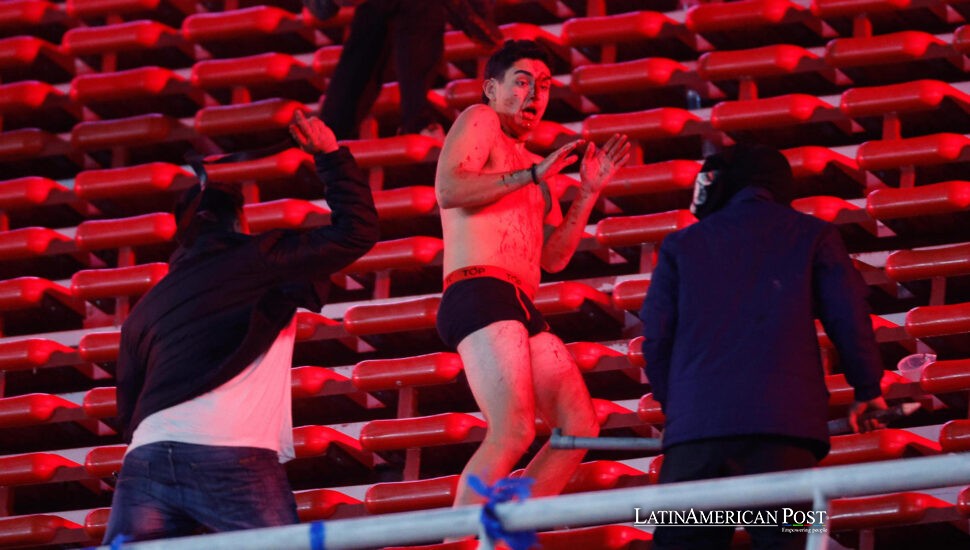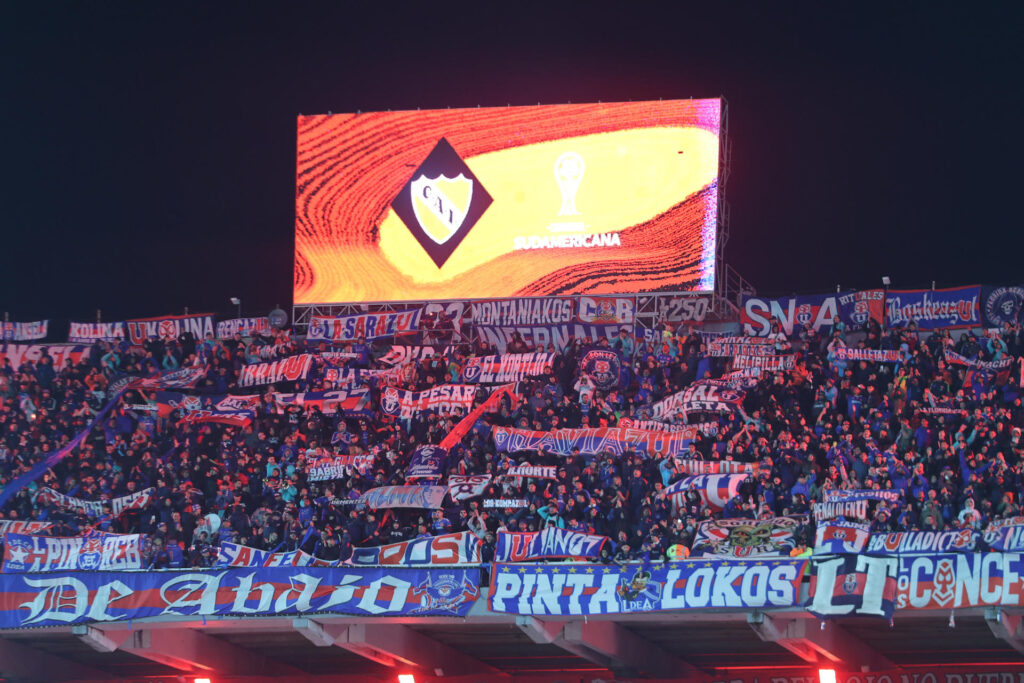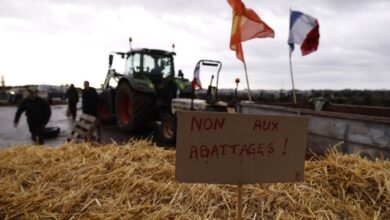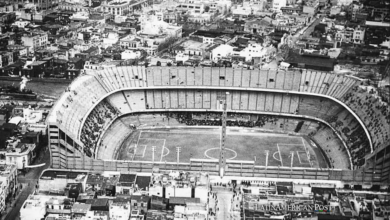South American Soccer’s Shame Night Exposes Cracks Beyond the Stadium

What began as a continental cup night in Buenos Aires ended in chaos—projectiles raining from the stands, a supporter plunging from the terraces, police frozen in place. The abandoned tie reignited politics, security debates, and a lingering truth: spectacle still outruns safety.
A stadium turns hostile.
The first sounds were ordinary for a derby: chants rising in waves, drums rolling like thunder. Then radios hissed. Stewards stiffened. From the upper tier of the Estadio Libertadores de América, where Universidad de Chile’s visiting fans had been placed directly above Independiente’s end, came the cascade: seats, masonry, fixtures, even toilets torn from bathrooms. Argentine outlets reported excrement hurled from above; some fans claimed stun grenades.
By halftime, the duel had mutated into a siege. As the second half began, home supporters appeared to breach barriers and push into the away section. One fan tumbled from a dangerous height and was severely injured, according to local reports. The referee stalled, waiting for assurances of order. None came. After 48 minutes—score level at 1–1 on the night, Universidad still leading 2–1 on aggregate—he called it off for “lack of security guarantees.”
The optics worsened the wound. TyC Sports reported that none of the 650 police officers stationed for the match, nor the stadium’s stewards, intervened during the most violent exchanges. CONMEBOL issued its familiar communiqué, blaming the host club and local authorities, before forwarding the case to its disciplinary committee. The ritual felt rote. The images felt sickeningly familiar.
Politics wades into the stands.
From Santiago, the response came swiftly. Chile’s president, Gabriel Boric, condemned the night as “wrong in too many ways,” blasting the violence and what he called “evident irresponsibility in the organisation.” He vowed to ensure Chilean supporters received medical care and due process if detained.
His ambassador in Buenos Aires confirmed 97 arrests and five hospitalizations, one from a handgun attack. Universidad de Chile officials echoed the alarm. Director Daniel Schapira labeled the episode “an organisational issue,” pointing to the dangerous decision to situate away fans above home supporters. Club president Michael Clark called it “a tragedy,” adding that blame could wait, but design flaws were obvious.
Independiente’s president, Néstor Grindetti, countered with a mirror narrative: visiting supporters were responsible, he argued, citing “reprehensible behavior,” bathrooms destroyed, appliances ripped out, and thrown down. He insisted his club had fulfilled obligations, including an allocation of 3,500 tickets approved by CONMEBOL. Between his defense and the harrowing footage lay a void that words could not bridge.
Blame, denial, and the architecture of risk
This night of shame did not materialize from nowhere. South American football’s crowd-management record is scarred. In April, two teenagers died in Santiago after a clash with police outside a Colo-Colo Libertadores match. In 2018, River Plate’s bus was attacked before the Libertadores final, forcing the decisive leg to Madrid. Each episode was treated as exceptional. Too few were addressed as systemic.
Design choices compound the danger. Placing away fans directly above home stands in a knockout tie invites gravity into the equation. The first object tossed becomes a torrent. A breached barrier becomes a running battle. When police stand inert, when stewards are outnumbered, stadiums cease to be venues and turn into accelerants.
Chile international Felipe Loyola, who now plays for Independiente, posted afterward that he was “devastated.” His words were simple: “This isn’t football. Sport is not violence.” His grief read less as a statement than as a plea.
Administrators can reschedule, shift the remaining minutes to a neutral city, or even move the tie abroad, as precedent allows. But neat paperwork will not erase the chaos in Avellaneda. The fundamental question persists: why, after decades of inquiries and tragedies, are South American stadiums still designed and staffed in ways that turn predictable flashpoints into disasters?

A reckoning long deferred.
Football feeds on ritual. Too often, those rituals repeat after tragedy: clubs blaming rivals, confederations shuffling papers, governments issuing condolences. The machinery hums; the pattern hardens. Stadiums are left with the same flaws, the same vulnerabilities, waiting for the next eruption.
True reform requires more than tribunals. Away allocations must be treated as technical problems, not trophies. Stadium architecture must be audited independently, with enforceable standards for separation, neutral zones, and emergency egress. Policing must be preventive, visible, and willing to intervene—before stretchers and sirens fill the gaps. And clubs must speak to their fans about responsibility, not just rage.
For now, the Copa Sudamericana tie is suspended in bureaucratic limbo, abandoned at 1–1 with Universidad still ahead on aggregate. What is not in limbo is the pattern. The lesson is familiar, written in blood and porcelain shards: when football becomes a test of survival, the scoreboard is meaningless.
Also Read: Peruvian Equestrian Prodigy Turns Horse Bonnets into Lifelines for Andean Women
Schapira, the Universidad director, called the spectacle “a circus.” But circuses have ringleaders. Avellaneda offered something far worse: institutions shrinking before the sport’s oldest demons. Until South American football decides that safety outweighs spectacle, there will be more nights like this—and more apologies no one wants to read.





